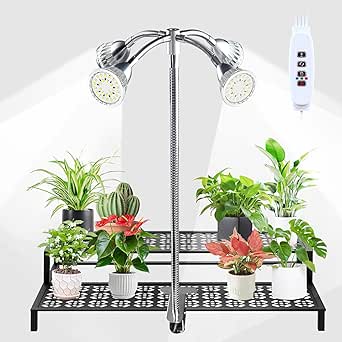Are you considering purchasing the Atildp Grow Lights to help your indoor plants thrive? Before making a decision, it’s important to weigh the pros and cons of this product. In this article, we’ll explore the key advantages and disadvantages of the Atildp Grow Lights to help you determine if they are the right choice for your indoor gardening needs.

Pros of Atildp Grow Lights
Full Spectrum LED Lights: The Atildp Grow Lights feature a combination of 40 red LEDs and 64 white LEDs, providing a full spectrum of light that closely mimics natural sunlight. This helps indoor plants receive the wavelength range they need to grow and thrive.
Energy-Efficient: Despite its powerful lighting capabilities, the Atildp Grow Light only consumes about 12W of power, making it a cost-effective option compared to traditional indoor grow lights.
Adjustable and Flexible: The grow light comes with a flexible 24-inch gooseneck and sturdy clamp, allowing you to easily mount it to tabletops, flower beds, planters, or desks. You can also adjust the light intensity with 10 dimmer settings and customize the angle of illumination for optimal plant growth.
Timer and Color Mode Options: The Atildp Grow Light offers a 3/9/12-hour selectable timer and three light modes (6500K white/red/red white). It also has an auto cycle memory function, enabling you to choose your preferred mode for your plants.
Cons of Atildp Grow Lights
Limited Coverage: While the Atildp Grow Light is suitable for small to medium-sized plants, it may not provide sufficient coverage for larger indoor gardens or multiple plants.
Potential Heat Generation: Some users have reported that the grow light can generate heat, which may be a concern for plants that prefer cooler environments or in small, enclosed spaces.
Durability Concerns: Although the Atildp Grow Light features a patented design and aluminum alloy construction, a few customers have reported issues with the durability of the product over time.